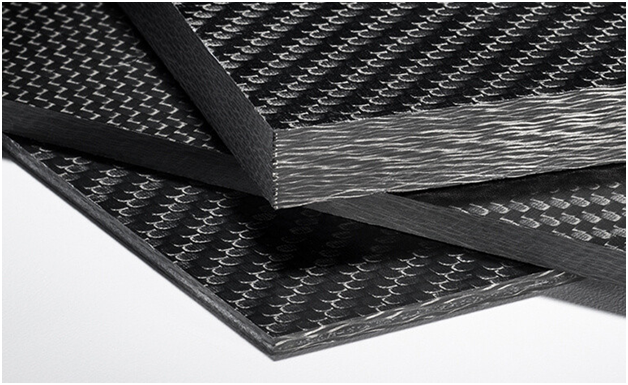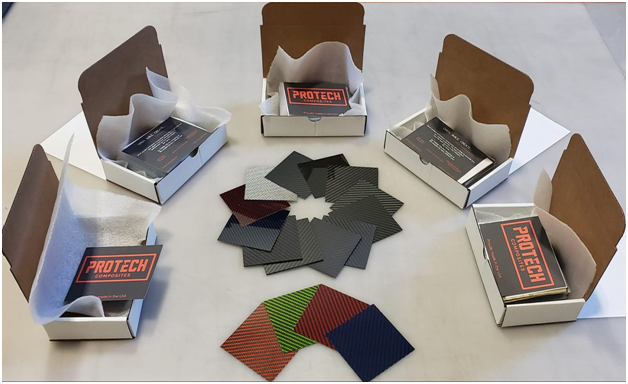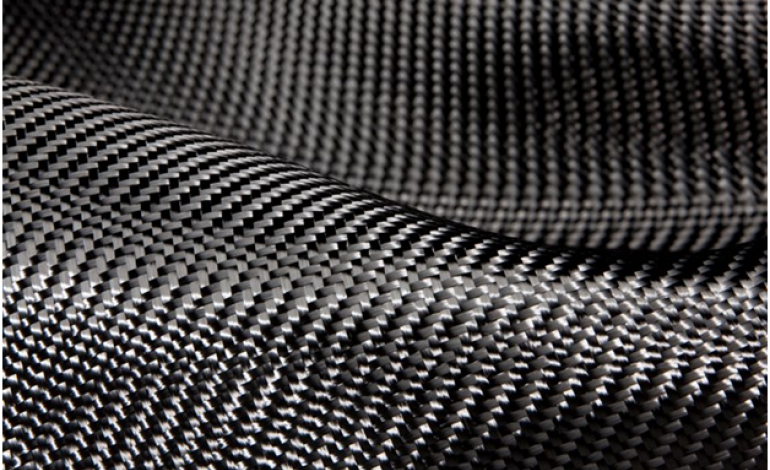Carbon fiber is a miraculously light and strong material that can be used for a wide range of different applications in an equally diverse range of industries, from medicine to sports to engineering.
Carbon fiber itself can be up to 10 times stronger than steel while being up to 5 times lighter. It also exhibits remarkable corrosion and chemical resistance, and some forms are even UV-resistant when finished with certain select epoxies.
But carbon fiber panels are not immune to defects. There are two common defects sometimes associated with carbon fiber, known as porosity and pinholes. To understand these, we need to understand how carbon fiber panels are made.
How Are Carbon Fiber Panels Made?
Carbon fibers are created from a polymer known as polyacrylonitrile. This polymer is stretched into fine fibers, then washed and stretched, which forms thin strands of tightly bonded carbon crystals.
Then, these fibers are heated in a process that adds oxygen atoms to the matrix and improves the linearity of the molecular bonds. Next, the fibers are heated up to a much higher temperature in an oxygen-free environment which results in the expulsion of everything but the carbon atoms.
When all that remains are linear carbon fiber “strands” with a high tensile strength, they are segmented into bundles according to diameter. These bundles are known as “tows” which are then wound onto bobbins.
Tows are categorized according to the number of filaments contained in each bundle, in thousands. Standard tow categories include 1k, 3k, 6k, and 12k, but there are specialty tows that have even high strand counts.
After the tows are wound onto bobbins, they are loaded into a loom through which they can be woven into carbon fibers sheets. Some carbon fiber panels are not-woven, but are instead made of chopped or continuous strand mats.
After weaving, the panels are then injected with an epoxy resin which reinforces the matrix. We use a low-density, UV-stable epoxy resin with a high compressive strength that increases the rigidity and strength of our carbon fiber panels.
What Is Porosity?
If you’ve ever worked with carbon fiber products before, such as carbon fiber panels or sheets, you may have heard of a term “porosity” or even noticed its effects. Porosity can occur in carbon fiber during the process of finishing it with an epoxy resin.
Ideally, there are no voids in a carbon fiber matrix and the application of epoxy resin would be uniform. However, due the the fact that carbon fiber is woven, voids naturally occur in the spaces between the fibers, however, tight. The more viscous the epoxy resin compound used to impregnate the carbon fiber weave, the more likely pores are to form.
In other words, these carbon fiber sheets may have tiny holes trapped in them that remain full of volatiles, like air or moisture, after the epoxy resin is applied.
Because porosity entails the presence of many very small voids in the matrix, it can most accurately be detected and quantified via X-ray scans, such as computed tomography (CT) scans.
Now let’s consider how the presence of porosity affects the mechanical properties of carbon fiber plates, panels and other products.
How Porosity Affects the Qualities of Carbon Fiber Panels
The presence of porosity in carbon fiber panels is unfavorable, and is associated with adversely affected levels of both strength and elasticity.
The Journal of Composite Materials released an article in 2015 detailing a series of tests that were performed on carbon fiber reinforced plastic laminates with respect to porosity, strength and elasticity.
According to the article, the researchers conducted four mechanical tests on the carbon fiber reinforced laminates: V-notched rail shear, transverse tension, short-beam shear and three-point bending.
According to the tests, all material properties of the composite material were reduced as a result of the presence of pores in the matrix. Strength was more directly affected than elasticity, and the study also noted that the presence of fewer, larger pores was less deleterious than the presence of many small pores.
As voids (porosity) can present a series of issues to manufacturers and engineers that rely on the structural integrity and consistency of carbon fiber panels, it’s crucial to use materials that exhibit the greatest consistency and are produced using the most stringent processes.
For example, Protech Composites’ carbon fiber panels are produced using a proprietary manufacturing process that produces a very high fiber to resin ratio. These panels are not only exceptionally resilient to high temperatures; they are also very strong and exhibit little to no porosity.

What Are Pinholes?
Another categorical defect in carbon fiber materials is colloquially known as pinholes. Pinholes are somewhat similar to pores, but occur at the surface of a carbon fiber panel. They can often be detected under an intense light source after applying resin, and appear just as their name would suggest – like tiny dimples or indentations the size of a pinhead on the surface of the sheet – although they do not penetrate all the way through the layer.
Pinholes occur when air bubbles in the epoxy resin get trapped during the infusion process. It is a more common issue when panels are made using a vacuum infusion process although pinholes can occur in any manufacturing process. There are other reasons that pinholes might arise on carbon fiber sheets, and, notwithstanding the adverse affects that the manifestation of pinholes may present, it may be possible to rectify them with filling materials.
How Pinholes Affect Carbon Fiber Panels
Whether or not the presence of pinholes adversely affects the strength and flexibility of carbon fiber panels is one matter, but because pinholes can usually be visually detected, they are considered at minimum an unacceptable visual flaw. Carbon fiber products that manifest pinholes are often unfit for the purposes of finishing or ornamentation because they appear blemished.
However, it may be possible to rectify pinholes with the application of hole filler, clear coats, or certain polymer resins (putty) in some circumstances, especially if it is determined that the issue is purely cosmetic and not mechanical.

Use the Highest Quality Materials Available: Discuss Your Project with Us!
If you have any additional questions regarding the mechanical or cosmetic implications of imperfections such as porosity, pinholes, gaps, inclusions, distortions or cracks in carbon fiber panels, please feel free to contact us at 360-573-7800. You can also learn more about some of the specifics of carbon fiber in our collection of carbon fiber resources.
We’d also be happy to discuss your project so you can be sure you choose the carbon fiber product that is most suitable for the job, in terms of strength, elasticity, thickness, weight and appearance. Contact us for assistance!

